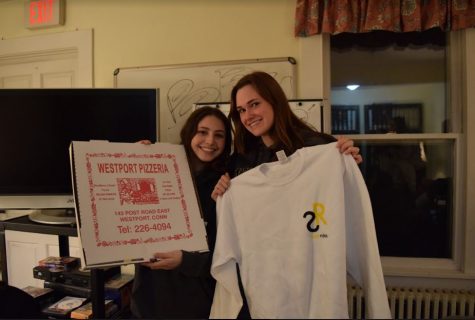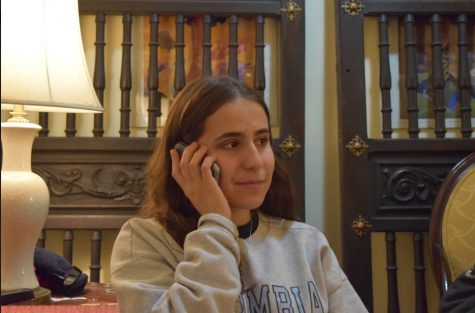By Renee Weisz ’17 & Colette Lippman ’17
SafeRides, the Saturday night volunteer transportation system for Westport youth, has recently experienced a decline in its services and a decrease in enrollment, affecting its ability to serve the community.
“I think that recently we’ve had a lot of people sign up at club rush, but not a lot of people have actually attended the training sessions and handed in their applications and forms,” Grace Wynne ’17, a Staples liaison and executive board member, said.
The organization has encountered difficulty finding enough student drivers. So, while in the past, the organization had four cars in service, now they have only two to three. The consequence for the loss of volunteers: longer wait times.

Maureen Coogan, the parent supervisor for Westport SafeRides believes the program’s decrease in use lies in students’ lack of awareness.
“Students who are freshmen and sophomores may not even be familiar with SafeRides, so they may not consider it as an option for a safe, free, confidential and non-judgmental ride home,” Coogan said. “The current senior class and the classes that graduated before them are very familiar with SafeRides and they primarily relied upon SafeRides as their way home on a Saturday night.”
SafeRides’ board members also attribute the lull in student use to the spike in popularity of the mobile application transportation network, Uber. While the Uber ride comes with cost, it eliminates the personalized layer of knowing the driver.
Martin Menz ’19 doesn’t like the idea of SafeRides’s drivers knowing who he is. “Although I trust that they maintain complete anonymity, there is something kind of weird with being driven home by an upperclassmen you don’t know,” Menz said.
However, other students, such as Natalie Schenk ’19 and Bridget Mulloy ’19, are not bothered by the potential awkwardness in receiving a ride from a school peer, and even prefer its services over a pricey, and more risky Uber ride from an unknown driver.
“I haven’t [used SafeRides] because I’ve never needed it, but I have the number in my phone and if I needed to, I wouldn’t hesitate to call them because it’s free and a lot safer than Uber,” Schenck said. Mulloy agreed that if she were ever in a position requiring a ride home on the weekend, she “would definitely call SafeRides over an Uber or a cab.”

SafeRides members have been preemptive in examining new strategies and ideas to counteract its decline in use.
According to Coogan, current members promote SafeRides through word of mouth, the club’s Facebook page, and presentations given to school health classes. New tactics include hanging posters around the school and reaching out to the SafeRides organizations in neighboring towns “to see what changes have worked with other school’s clubs and what can be done so that we can learn from what worked for them and what didn’t,” Julia Bilotti ’18, a board member, said.
Despite any difficulty in volunteer recruitment and student usage, Coogan believes the value of the club still stands. “The SafeRides club,” Coogan said, “is a wonderful way for Staples High School teens to get involved and volunteer in their community.”












































![[Nov. 2016 News] SafeRides struggles with decline in student use and volunteers](https://www.inklingsnews.com/wp-content/uploads/2016/11/saferides3-900x601.jpg)